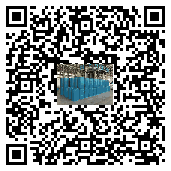Water-based unstable foam wetting agent: an "invisible assistant" to balance wetting and defoaming
Pinholes appear after the paint is applied, white spots appear when the ink is printed, and the adhesive is not firmly bonded.
Behind them may be the same "invisible problem" - the balance between wetting and foam. The water-based unstable foam
wetting agent is the key role in solving this problem. Its application advantages have penetrated into the production chain of
many industries and become the "behind-the-scenes hero" to improve product quality.
In the coating and ink industry
Its advantages are particularly prominent. In the production of coatings, uneven dispersion of pigments will cause the color of
the coating to be blurred, insufficient wetting of the substrate will produce shrinkage holes, and foam is easy to generate during
stirring and spraying, which will directly affect the appearance and performance of the coating. The water-based unstable foam
wetting agent is like a precise "reconciler". It can not only reduce the surface tension of the liquid, allowing the coating to spread
quickly on low-surface-energy substrates such as metals and plastics, but also help pigments such as titanium dioxide and carbon
black to disperse evenly, while not "adding fuel to the fire" to aggravate the foam problem. For example, in the production of
automotive paint, it can ensure that the paint forms a smooth and flat coating on the metal body, avoiding pinholes due to foam
residue, making the car look more refined; when applying latex paint on the wall, it can reduce brush marks and roller marks,
making the wall smoother and more beautiful.
For water-based inks
The clarity and firmness of the printed pattern are crucial. When the ink encounters difficult-to-wet substrates such as PE film and
PET film, the water-based unstable foam wetting agent can help the ink adhere quickly, ensuring that the edges of the printed text
and pattern are clear and the color is full. At the same time, it will not allow the ink to produce too much foam during the stirring
or printing process, avoiding problems such as printing leakage and missing dots caused by foam, and ensuring the quality of
packaging printing, especially in areas such as food packaging that require extremely high printing accuracy. Its role is indispensable.
In the adhesive and sealant industry
Water-based unstable foam wetting agents are "boosters" to improve bonding performance. In order for water-based adhesives to
firmly adhere to materials such as wood, paper, and plastic, they must first fully wet the surface of the adherend. If the wetting is
insufficient, there will be gaps between the glue layer and the material, resulting in a decrease in bonding strength. The water-based
unstable foam wetting agent allows the glue to quickly penetrate into the wood texture or fit tightly to the plastic surface,
enhancing the firmness of the bond. More importantly, it will not leave "holes" in the glue layer due to the generation of foam,
ensuring the sealing performance and structural strength of the adhesive and sealant. For example, in the use of glass sealants,
it allows the glue to fully contact the glass surface, effectively preventing water and air leakage, and ensuring the sealing effect.
The leather and textile industries are also inseparable from the "modification" of water-based unstable foam wetting agents. In the
leather finishing process, it can help the finishing agent evenly cover the leather surface and fibers, making the leather consistent
in color and smooth in feel, and avoiding uneven finishing and spots caused by foam. In textile printing and dyeing, a good
wetting effect is indispensable for dyes to evenly adhere to fibers such as cotton and polyester. Water-based unstable foam wetting
agents allow dyes to quickly penetrate fibers, ensuring that fabrics are dyed evenly and brightly, while reducing fabric wrinkles
caused by foam accumulation in the dye vat, making textiles even better.
In addition
Water-based unstable foam wetting agents also play an important role in water-based preparations in the pesticide and fertilizer
industries. In order for pesticides to fully exert their efficacy, they need to be evenly attached to crop leaves or pest surfaces. It
can enhance the spreadability of the liquid on the leaves, prevent the liquid from rolling down due to excessive surface tension,
and improve the utilization rate of pesticides. In water-soluble fertilizers, it can help the fertilizer solution quickly wet the crop
leaves or soil, promote nutrient absorption, and prevent foam from clogging the fertilization equipment, ensuring the smooth
progress of the fertilization process.
It can be said that water-based unstable foam wetting agents, with their unique advantages of "wetting enhancement" and
"defoaming compatibility", silently guard the quality of products in many industries. With the deepening of environmental
protection concepts and the advancement of water-based trends, the application stage of this "invisible assistant" will
continue to expand, providing strong support for high-quality production in more fields.


